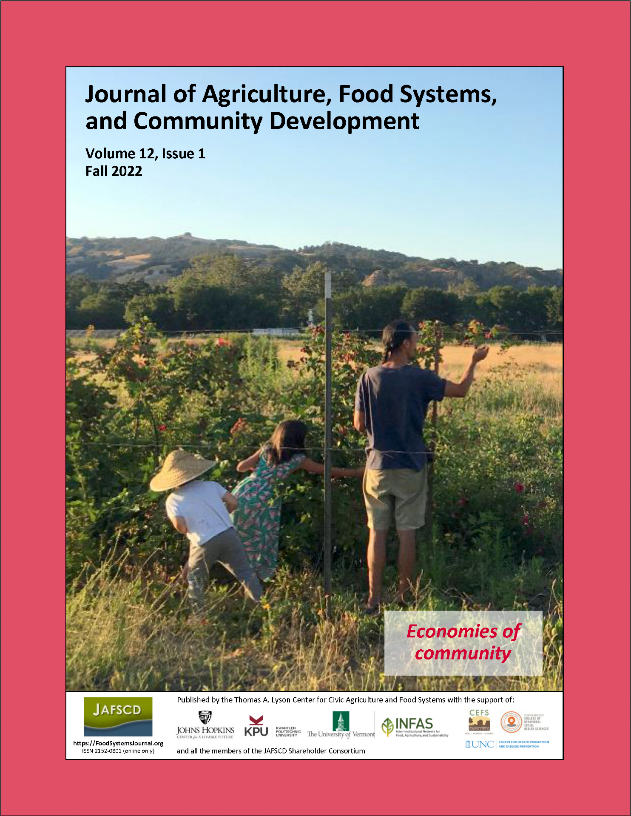A decade of the Missouri Hunger Atlas
Information for action
DOI:
https://doi.org/10.5304/jafscd.2022.121.003
Keywords:
Hunger, Food Insecurity, Indicator, Need, GIS, Mapping, Performance, Comparison, Food Affordability, Decision SupportAbstract
For over a decade, researchers at the University of Missouri Interdisciplinary Center for Food Security (ICFS) have produced five editions of the Missouri Hunger Atlas. Through a series of indicator maps and tables, the Atlas engages readers visually to help them understand the extent of local food insecurity across the state. The Atlas also assesses the performance of public and private programs that help people struggling to obtain sufficient healthy food. In this reflective essay, we discuss the process of creating the Atlas, the choice of indicators and data acquisition, the evolution of the Atlas over time, and how various groups use the Atlas for policy and action. The Atlas has become a go-to resource for a wide range of users, including policymakers, academics, food bank staff, Extension specialists, and advocates for low-income families. The first ten years of the Atlas have demonstrated that measurement is a dynamic process, requiring ongoing adjustments by researchers through discourse with data providers, stakeholder groups, and communities. Given the popularity of the Atlas and the availability of comparable secondary data for other state and county geographies, replication of this model by other states is feasible.
Metrics
Downloads
Published
How to Cite
Issue
Section
License
Copyright (c) 2022 Steven A. Henness, Bill McKelvey, Darren Chapman, Gloria N. Mangoni, Mary K. Hendrickson

This work is licensed under a Creative Commons Attribution 4.0 International License.
The copyright to all content published in JAFSCD belongs to the author(s). It is licensed as CC BY 4.0. This license determines how you may reprint, copy, distribute, or otherwise share JAFSCD content.













